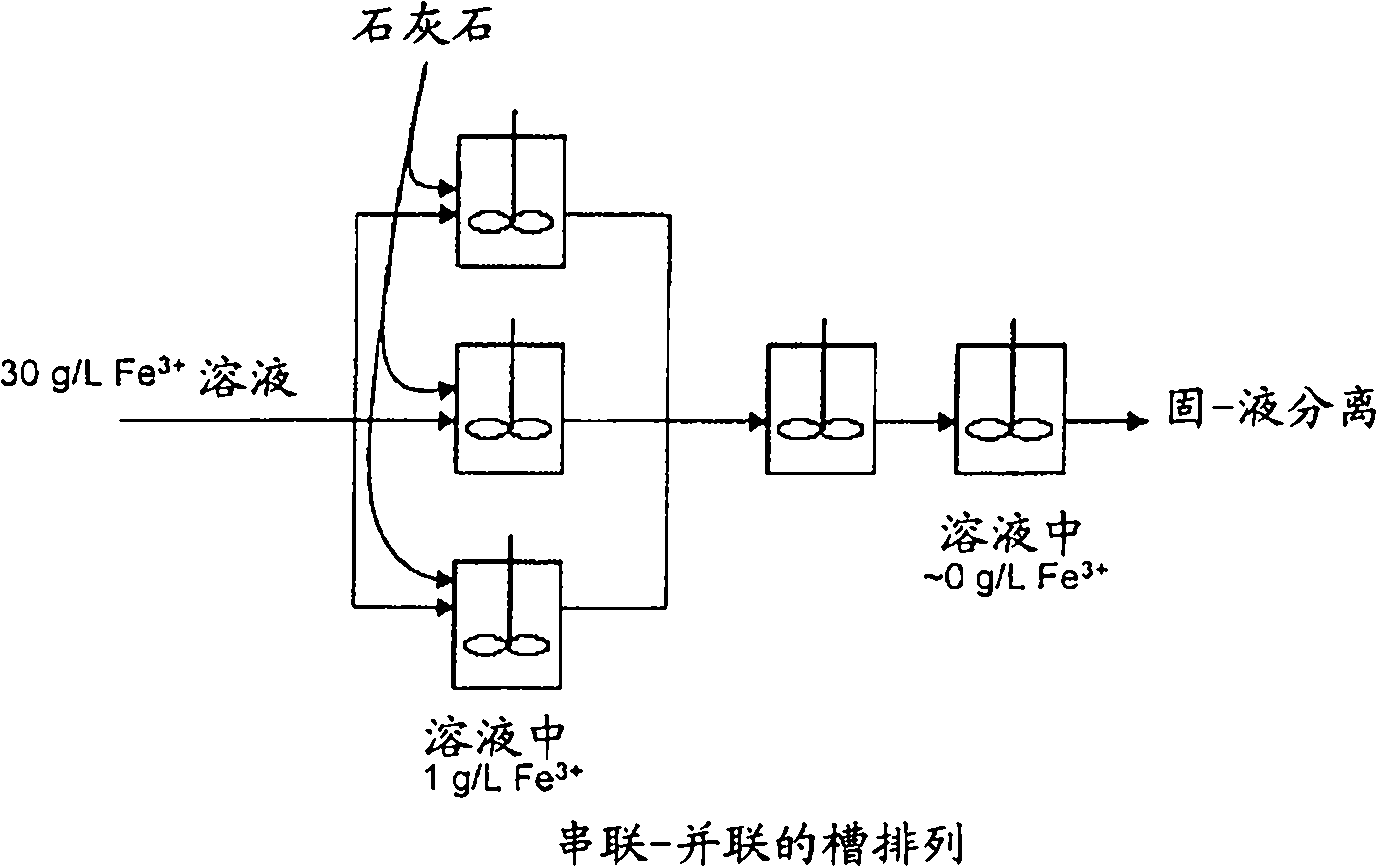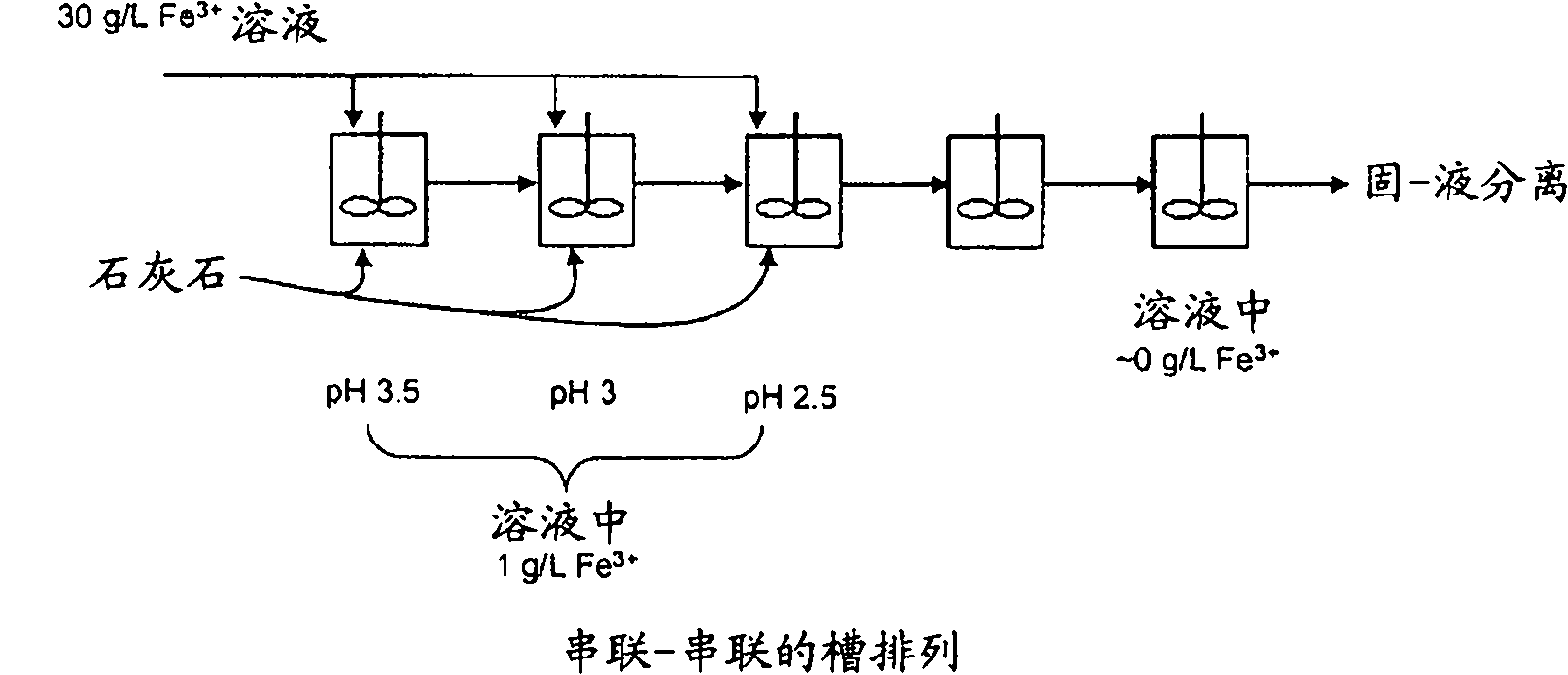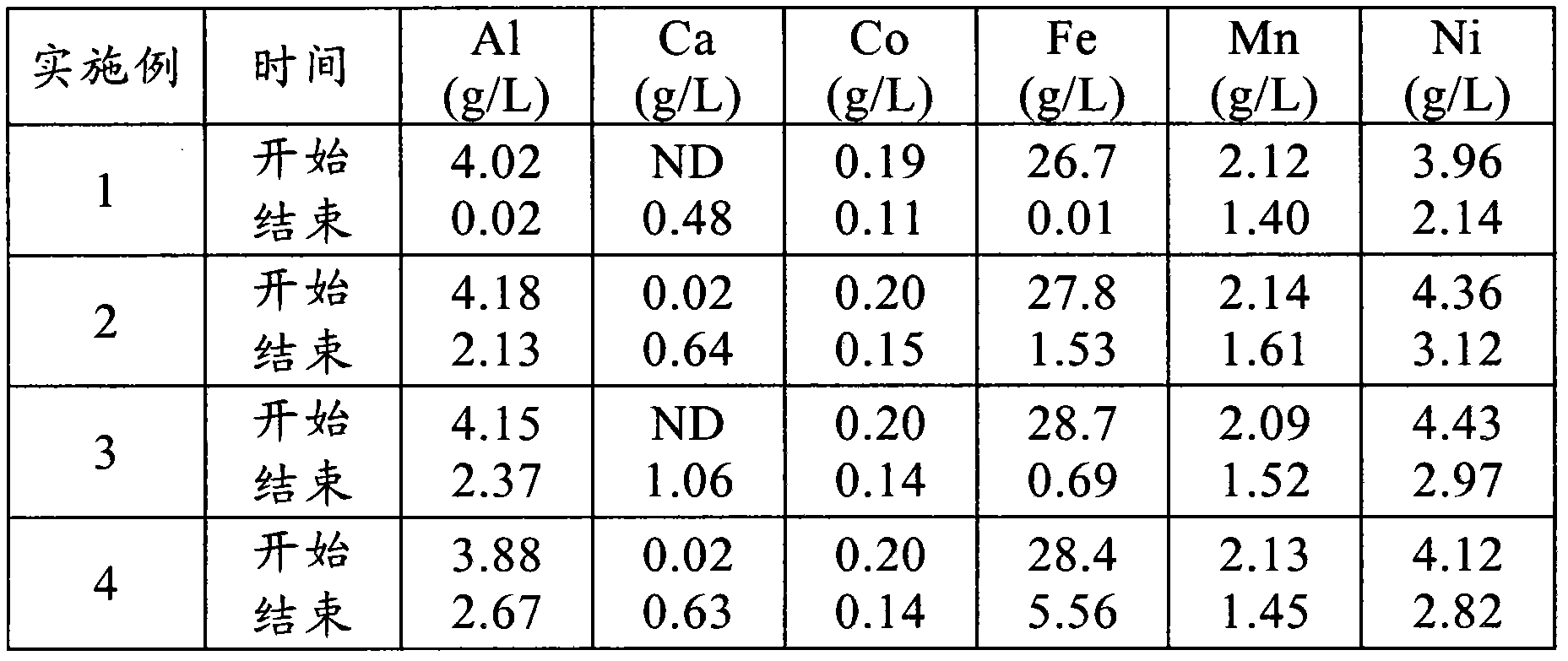Iron precipitation
A technology of ferric iron and iron oxide, which is applied in the field of iron precipitation and can solve problems such as the loss of valuable metals
- Summary
- Abstract
- Description
- Claims
- Application Information
AI Technical Summary
Problems solved by technology
Method used
Image
Examples
Embodiment
[0056] Example 1 - Comparative Example
[0057] A solution (2.5 L) containing nickel sulfate and iron sulfate was placed in a baffled reaction vessel equipped with a mechanical stirrer. Stirring the heating vessel raised the solution temperature to 85°C, which was the control temperature throughout the experiment. A slurry of limestone in water (25% w / w) was pumped into the reactor to achieve and maintain a pH of 3.0. If necessary, add a small amount of concentrated H 2 SO 4 to correct the pH to this level. After stirring for 25 minutes, the contents of the container were decanted and a sedimentation test and a vacuum filtration test were performed on two 1 L samples of the slurry. At the completion of these tests, the combined slurry was filtered and the filter cake was washed thoroughly with water. A sample of the solid was dried and assayed by XRF.
Embodiment 2
[0058] Example 2 - Controlled goethite precipitation at constant pH
[0059] Water (500 mL) was placed in the same baffled reaction vessel as described in Example 1. The vessel was heated with stirring to raise and maintain the vessel contents at 85°C throughout the experiment. A sample of the solution (2.5 L) as used in Example 1 was pumped into the reactor for 2.5 hours at a controlled rate to maintain a ferric ion concentration of 1.1 g / L to 2.5 g / L . The solution pumping rate was increased from 9 mL / min at the beginning of the experiment to 46 mL / min at the end of the experiment to maintain the ferric ion concentration within this range. A slurry of limestone in water (25% w / w) was simultaneously pumped into the reactor to achieve and maintain a pH of 2.0. When 2.5 hours was complete, the contents of the reaction vessel were decanted and processed as in Example 1.
Embodiment 3
[0060] Example 3 - Controlled goethite precipitation at constant pH and ambient temperature
[0061] Water (500 mL) was placed in the same baffled reaction vessel as described in Example 1. A sample (2.5 L) of the solution as used in Example 1 was pumped into the reactor for 2.5 hours at a controlled rate to maintain a ferric ion concentration of 0.22 g / L to 0.31 g / L. The solution pumping rate was increased from 9 mL / min at the beginning of the experiment to 46 mL / min at the end of the experiment to maintain the ferric ion concentration within this range. A slurry of limestone in water (25% w / w) was pumped simultaneously into the reactor to achieve and maintain a pH of 3.0. Throughout the experiment, the temperature was allowed to remain at ambient temperature of 21 °C. When 2.5 hours was complete, the contents of the reaction vessel were decanted and processed as in Example 1.
PUM
 Login to View More
Login to View More Abstract
Description
Claims
Application Information
 Login to View More
Login to View More - R&D
- Intellectual Property
- Life Sciences
- Materials
- Tech Scout
- Unparalleled Data Quality
- Higher Quality Content
- 60% Fewer Hallucinations
Browse by: Latest US Patents, China's latest patents, Technical Efficacy Thesaurus, Application Domain, Technology Topic, Popular Technical Reports.
© 2025 PatSnap. All rights reserved.Legal|Privacy policy|Modern Slavery Act Transparency Statement|Sitemap|About US| Contact US: help@patsnap.com



